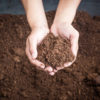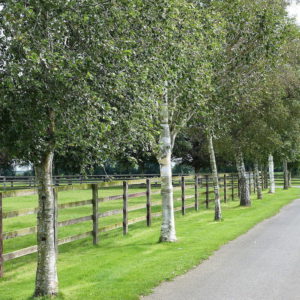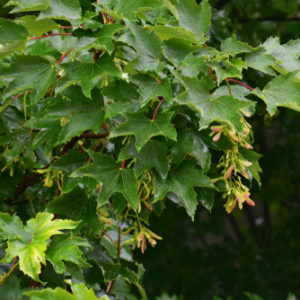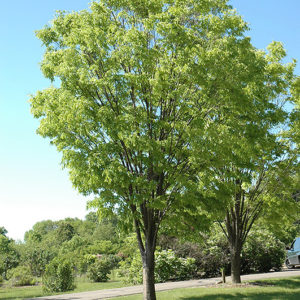Prunus Shirotae
Price range: €480.00 through €750.00
Frequently Bought Together



Description
Quick Facts
- Common Name: Mount Fuji Cherry, Shirotae Cherry
- Botanical Name: Prunus ‘Shirotae’ (syn. Prunus ‘Mount Fuji’)
- Plant Type: Deciduous tree
- Mature Height: 6-8m
- Mature Spread: 8-10m
- Flowering Period: April to early May
- Flower Colour: Pure white semi-double to double flowers
- Foliage: Ovate leaves, bright green turning orange-red in autumn
- Hardiness: RHS H6 (hardy)
- Soil Requirements: Moist, well-drained, fertile
- Aspect: Full sun to partial shade
- Maintenance: Low
Description
Experience the breathtaking beauty of Prunus ‘Shirotae’, the stunning Mount Fuji Cherry that brings spectacular spring drama, elegant spreading form, and pure white blossom clouds to your garden with its magnificent floral display and graceful horizontal branching. This outstanding ornamental cherry offers exceptional visual impact—masses of large, fragrant, pure white semi-double to double flowers that smother the branches in mid to late spring, creating a stunning snow-white cloud effect, distinctive wide-spreading horizontal branching that creates elegant architectural form and displays the blossoms to perfection, delicate fragrance that fills the garden on warm spring days, and beautiful autumn colour when the foliage transforms to shades of orange and red, making this one of the most elegant and free-flowering ornamental cherries for creating dramatic focal points and celebrating the arrival of spring in Irish gardens.
Throughout mid to late spring, this captivating tree becomes completely smothered in spectacular pure white flowers measuring 4-5cm across, each with semi-double to double layers of delicate petals (typically 10-20 petals per flower) that create a luxurious, frilled appearance. The flowers emerge from pink-tinged buds and open to dazzling pure white, appearing in generous clusters along the branches before or just as the leaves emerge, creating maximum visual impact. The distinctive wide-spreading, almost horizontal branching displays the blossom clouds to perfection, creating elegant tiers of white that seem to float in the air. The delicate almond-like fragrance attracts bees and other early pollinators. The bright green ovate leaves measuring 8-12cm long with serrated edges emerge as the flowers fade, creating fresh foliage throughout summer. In autumn, the leaves transform into beautiful shades of orange, bronze, and red before falling, providing a second season of colour. The smooth grey-brown bark with horizontal lenticels adds winter interest.
This remarkable cultivar is a Japanese flowering cherry, with ‘Shirotae’ meaning ‘snowy white’ in Japanese—a perfect description of the pure white blossom display. Also known as ‘Mount Fuji’, referencing Japan’s sacred snow-capped mountain. Hardy and adaptable, this cherry thrives in Irish conditions, tolerating our cool springs and providing reliable flowering year after year. The wide-spreading form creates elegant presence whilst remaining manageable in medium to large gardens. One of the earliest and most profuse white-flowering cherries, often blooming slightly ahead of other varieties.
Create stunning compositions by planting as spectacular specimen trees in lawns where the wide-spreading form and cascading white blossom can be fully appreciated. Magnificent in avenue plantings for dramatic spring impact, or grouped in threes for enhanced effect. Works beautifully in contemporary gardens, formal landscapes, or naturalistic settings. Exceptional underplanted with spring bulbs like white and blue muscari, white narcissus, or blue scilla that echo and complement the white blossom. Plant where visible from the house to enjoy the spectacular spring display, and position to be backlit by spring sun for maximum impact.
Caragh Garden Notebook
Planting: Space trees 8-10m apart for avenue or group plantings, or allow 10-12m for specimen placement to accommodate the wide-spreading mature form. Plant bare-root trees from November to March, or container-grown specimens year-round (autumn or early spring is ideal). Dig holes twice the width of the root ball and incorporate generous amounts of organic matter. Plant at the same depth as the nursery soil mark—avoid planting too deeply. Stake securely for the first 2-3 years. Water thoroughly and mulch around the base, keeping mulch away from the trunk.
Soil Preparation: Thrives in moist, well-drained, fertile soil with pH 6.0-7.5. Prefers neutral to slightly acidic, moisture-retentive conditions enriched with generous amounts of organic matter. Dislikes waterlogged, very dry, or shallow chalky soils. Requires good drainage—cherries are susceptible to root diseases in poorly drained conditions. Best flowering and growth occur in full sun with consistent moisture, shelter from harsh winds, and fertile soil. Avoid exposed sites where spring winds can damage the delicate blossoms.
Container Growing: Not suitable for long-term container growing due to size, vigorous growth, and extensive root system. Young specimens can be grown temporarily in very large containers (minimum 80cm diameter) using soil-based compost for 2-3 years, but should be planted out for best long-term health, spectacular flowering, characteristic spreading form, and autumn colour development.
Seasonal Care: Requires minimal pruning—the naturally elegant spreading form develops without intervention. Remove only dead, damaged, or crossing branches in mid to late summer (July-August) when the tree is in full leaf—never prune in winter or spring as this increases risk of bacterial canker and silver leaf disease. Avoid creating large wounds. Remove any suckers arising from the rootstock below the graft union. Apply slow-release balanced fertiliser in early spring. Mulch annually with organic matter to retain moisture and suppress weeds. Water during dry spells, especially in the first 3-5 years until well established. Monitor for cherry leaf spot, aphids, and caterpillars—generally pest and disease resistant.
Propagation: Cannot be propagated from cuttings or seed as this is a named cultivar that must be grafted to maintain true characteristics. Professional propagation is by budding or grafting onto Prunus avium (wild cherry) rootstock. Home gardeners should purchase nursery-grown grafted specimens for guaranteed quality, reliable flowering, and characteristic form.
This elegant beauty is absolutely spectacular—those masses of pure white semi-double flowers create such a stunning snow-white cloud effect in spring! That wide-spreading horizontal branching displays the blossoms to perfection, creating elegant tiers of white that seem to float. The delicate fragrance is gorgeous, and the autumn colour is a lovely bonus. One of the most free-flowering and elegant white cherries—pure Japanese elegance for your garden!






